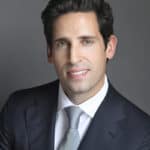Herniated discs are one of the most common causes for low back pain and sciatica. Between 60% and 80% of people will experience low back pain at some point in their lives and of those, a high percentage will be due to a herniated disc. Chiropractic treatments andphysical therapy can help get relief from pain and discomfort due to a herniated disc.
What exactly is a herniated disc?
Your spinal cord is surrounded and protected by vertebrae, the bones of the spine. In between each vertebra there is a cushion called an intervertebral disc. Those intervertebral discs, which are soft and gel like on the inside and more tough and fibrous on the outside, act as a cushion to absorb impact places on the vertebra and allow proper range of motion on your spine. When the gel like material inside the spinal disc protrudes, or ruptures through the fibrous outer later of the disc, it causes a herniated disc. This can happen naturally as we age but it can also be caused by damage or injury to the spine.
What are the symptoms?
Many people with herniated discs have no pain or symptoms but when the protruded material presses on a nerve, it can cause pain, numbness, and weakness. These symptoms depend on where the herniated disc is located. Most occur in the lumbar spine (lower back), followed by the cervical spine (neck) and sometimes but rarely, in the thoracic spine (chest). Herniated discs in the lumbar region can cause pain that travels down the back and through the legs, sciatica and a herniated disc in the cervical spine can cause pain in the neck that can travel down the arms.
What are the treatment options?
Treatments for a herniated disc range from physical therapy, chiropractic treatment, to anti-inflammatory medication, to surgery. A chiropractor can help address back pain and other symptoms associated with herniated discs by developing a customized treatment plan that may include spinal manipulation and other techniques to help ease symptoms.
Physical therapy is another great treatment option. Physical therapy’s goal is to help you continue to participate in your daily activities and life roles. The therapist will design a treatment program based on both the findings of you individual evaluation and your personal goals. Your treatment will move than likely include a combination of exercises that will help relieve nerve pressure and decrease pain and other symptoms.
If you have been suffering with symptoms from having a herniated disc contact Northeast Spine and Sports Medicine. We have a team of dedicated professionals who are well versed in caring for patients with herniated discs. Contact us for an appointment to learn more and to get you on the track to living with less pain and discomfort.


